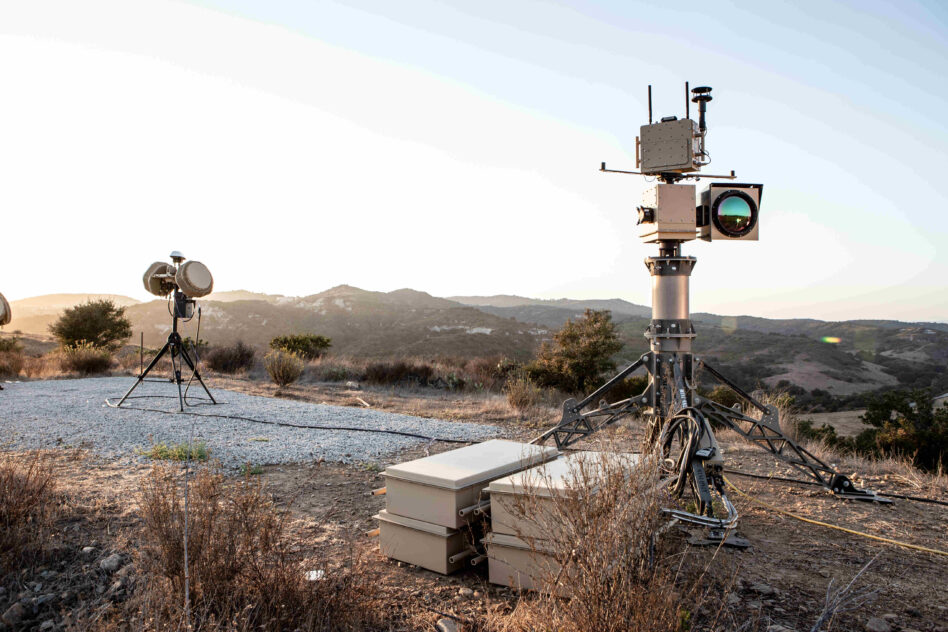It’s been a big week for everyone’s favorite defense tech darling. Just days after Anduril launched their buzzy AI-powered EagleEye helmet display for the Army, the service announced Wednesday that the company has won a DIU competition for a new counter-drone fire control solution.
NGC2 concerns aside, it sure seems like Anduril’s still in good standing with the Army.
Winner winner: In the Army’s announcement, the service said that Anduril’s win in the joint PEO Missiles and Space and DIU competition “represents a critical step in identifying and integrating the most effective fire control solutions to counter the rapidly evolving threat of unmanned aircraft systems.”
The Army’s statement didn’t reveal too much (government shutdown things), but the competition for a next-gen c-UAS fire control solution, called the Forward Counter Unmanned Aircraft Systems Command and Control System (FCUAS C2), was announced by DIU last December.
Fired up: For a bit of background, fire control refers to the C2 layer that fuses sensors, displays a common air picture, recommends or automatically delegates engagement options, and issues engagement orders to effectors. Basically, it’s the integrated kill chain that detects, identifies, tracks, and engages UAS threats. The DIU clearly thought the current tech was not up to snuff.
“Current [C2] systems are not optimized to address the speed at which kill chain decisions (detect, track, identify/ assess, defeat) must occur to counter unmanned systems,” the DIU wrote in the solicitation. “As the UAS threat increases, a single operator conducting air defense operations may be overwhelmed.”
At AUSA, the Army’s counter-drone product office lead, Col. Guy Yelverton, said the competition’s winner would replace the FAAD C2 (Forward Area Air Defense C2) system that Northrop Grumman’s currently providing. Northrop also competed to replace the current system with its new c-UAS C2 platform, AiON, but the neo-prime had an edge on the prime. The future is now, old man.
Yelverton also said that the Army is planning to host recurring competitions for c-UAS solutions “at least at an every two-year cycle, to make sure that we know and understand the capabilities out there from our industry partners,” so Anduril can’t get too comfortable.
In the Army’s statement, it said it’ll “continue working closely with Anduril to refine and integrate this cutting-edge technology into its C-UAS architecture, ensuring the highest level of protection for our warfighters.”
On the table: Anduril’s c-UAS portfolio has a few popular options:
- Sentry: Anduril’s Long Range Sentry Tower features a high-powered 360-degree radar that can identify, classify, and track Group 1 through 3 drones. They also have a mobile option and an Extended Range Sentry Tower that can track threats up to five miles away.
- Anvil: Anduril’s kinetic autonomous interceptor. They have a munition variant with an explosive payload and a fire control module to take down Group 2 drones.
- Lattice: Of course, it wouldn’t be Anduril without Lattice, its mesh networking platform that fuses data and inputs from sensors and effectors, including Anvil.
- Radars: Anduril also offers smaller and more versatile radar options, including Spark and Spyglass, to track ground and aerial threats, with Spark able to track Group 3 threats up to 10 miles away.
- Interceptors: Anduril (along with Zone 5 Technologies) was also recently tapped to work on larger interceptors for the DIU’s Counter NEXT program, which focuses on Group 3 and larger drones.
The Army’s announcement didn’t provide any contract or award details, but Anduril won a $642M, 10-year Indefinite Delivery/Indefinite Quantity (IDIQ) Marine Corps contract for an integrated c-UAS fire control system using Lattice and Anduril effectors, so a big Army contract could be headed to Mr. Luckey’s desk sometime soon.
The winning streak continues.

